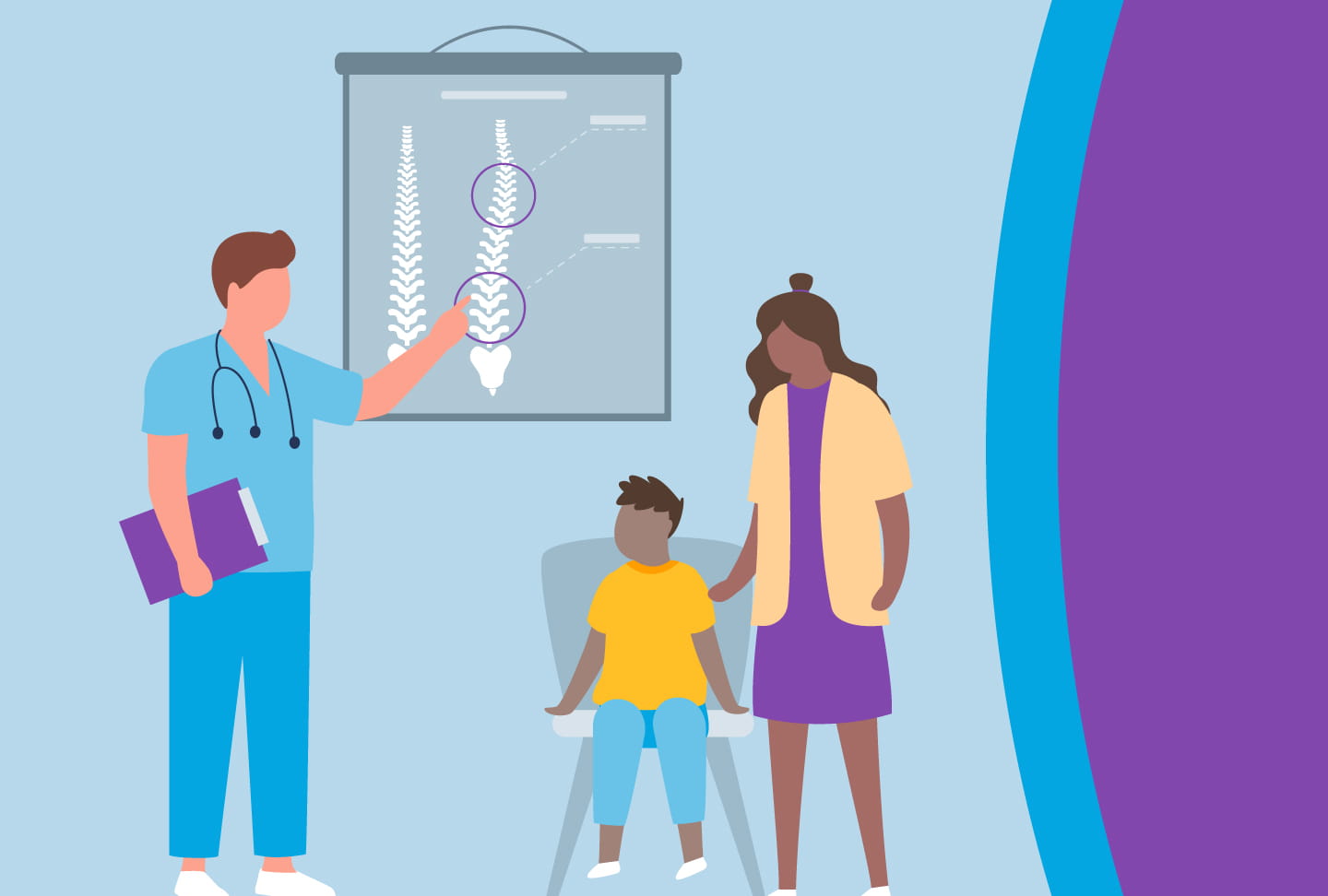Scoliosis, or curving of the spine, has been around for centuries. Over time, treatments have improved to offer patients more options to maintain motion and recover smoothly. The compassionate experts at Wellstar Pediatric Orthopedics use cutting-edge technology to provide scoliosis care tailored to your child.
Fusion, which involves bone grafting and limiting motion through segments to control spinal deformity, used to be a popular treatment method. However, these treatments could lead to stiffness and postoperative pain concerns.
“As care has evolved, clinicians have begun to focus on alternative methods that help patients maintain motion and flexibility,” said Wellstar Pediatric Orthopedic Surgeon Dr. Timothy Oswald.
Over the last two decades, an immense amount of research and innovation has led to the development of new procedures to preserve motion, called fusionless scoliosis treatments. Currently the two most popular and well-studied treatments are anterior vertebral tethering and posterior distraction technologies.
Vertebral body tethering
Vertebral body tethering is an improvement upon previous treatment and allows for the potential of improved correction. However, the procedure has also now been associated with a high incidence of tether breakage and progression.
In this procedure, the surgeon attaches metal anchors to the side of the spine that is curved. A flexible cord is connected to these anchors, and as the child grows, the tether slows the growth on the curved side, helping the spine grow straighter.
Currently there are very limited indications and a very specific time frame when tethers have been found to be successful for improving curves in the growing child. But as with any new technology, the next generation of innovation is encouraging: The tethers have become stronger and indications clearer. Wellstar currently offers this treatment but with very strict inclusion criteria so that we can have the best outcomes for our patients.
Posterior distraction technologies
Another new option is posterior distraction based fusionless technologies. The surgeon implants a rod with flexible joints that help the patient maintain normal spine motion.This procedure has shown an 85% success rate within two years with controlling the curve of the spine, but there are still concerns of instrumentation failure and progression. Wellstar also offers this surgery and has had good success in the appropriate patient population.
If your child has advanced scoliosis, Wellstar offers multiple care options, and our team is experienced in treating this condition in children. Our specialty surgeons each have over 20 years of experience treating pediatric spinal deformities. To find a surgeon near you, visit wellstar.org/pedsortho.




